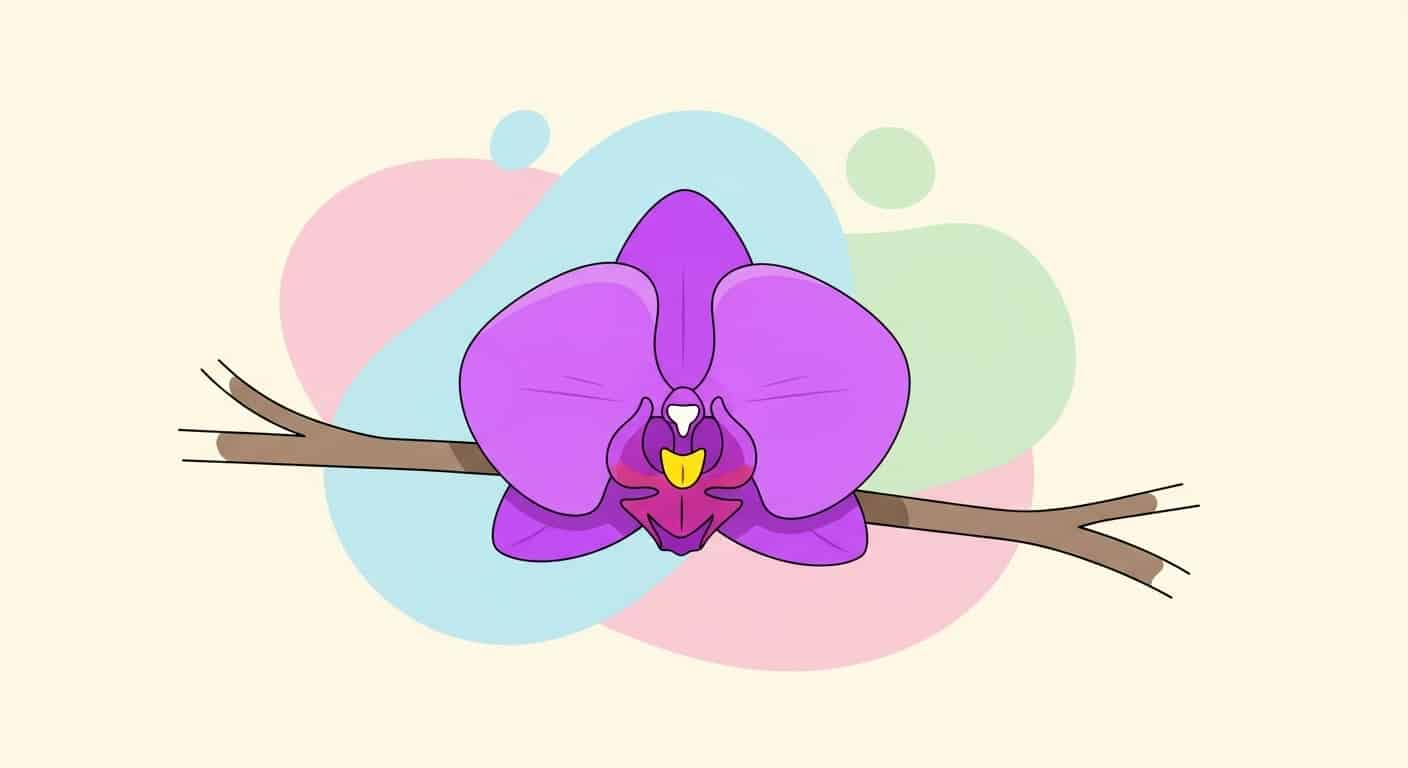Are orchids parasitic plants?
No, most orchids are not parasitic plants. While some rare species exhibit parasitic traits, the vast majority are epiphytes that grow on trees for support and gather nutrients from the air and rain, rather than from their host plants.
Orchids are one of the most captivating and diverse plant families on Earth, admired for their intricate flowers and stunning beauty. Yet, a common question clouds their reputation: are orchids parasitic plants? You may see them clinging to trees and wonder if they are harming their hosts. This article will delve into the fascinating world of orchids to clarify this misconception once and for all. We will examine their unique lifestyle, their relationship with other organisms, and why the term “parasite” doesn’t fit most of these incredible plants.
The Misconception: Are Orchids Parasites?
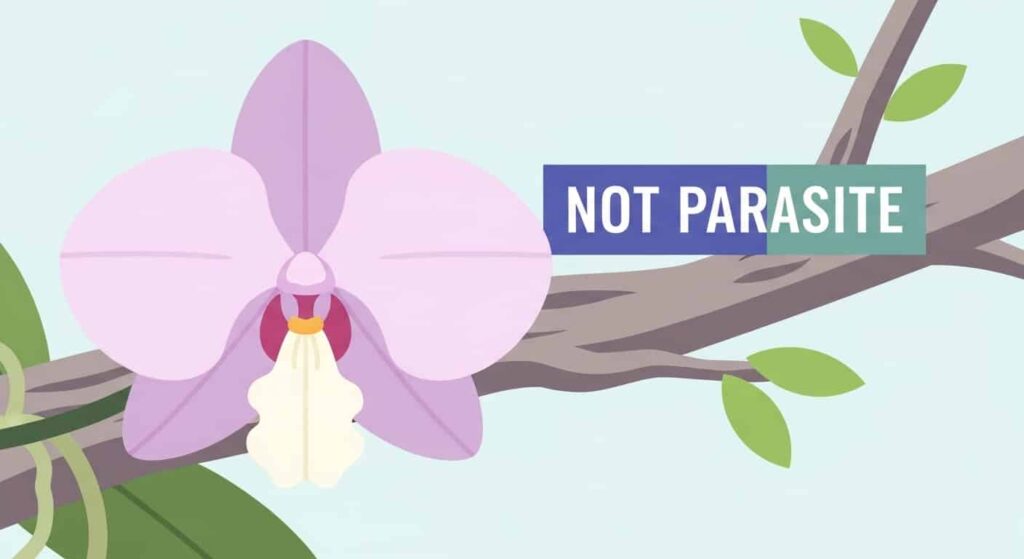
The confusion often begins with how many orchids grow. Many species are epiphytes, meaning they grow on other plants, like trees. When people see an orchid’s roots wrapped around a tree branch, it’s easy to assume it’s a parasitic relationship. So, are orchids parasites of trees? The simple answer is no. A true parasite steals nutrients and water directly from its host, often causing harm. Orchids don’t do this.
Instead of penetrating the host’s tissues, an orchid’s roots simply use the tree as an anchor. This elevated position gives them better access to sunlight, air circulation, and rainwater. They absorb moisture and nutrients from the air, rain, and the debris that collects around their roots on the tree bark. The host tree is merely a support structure, not a food source.
Understanding Plant Relationships
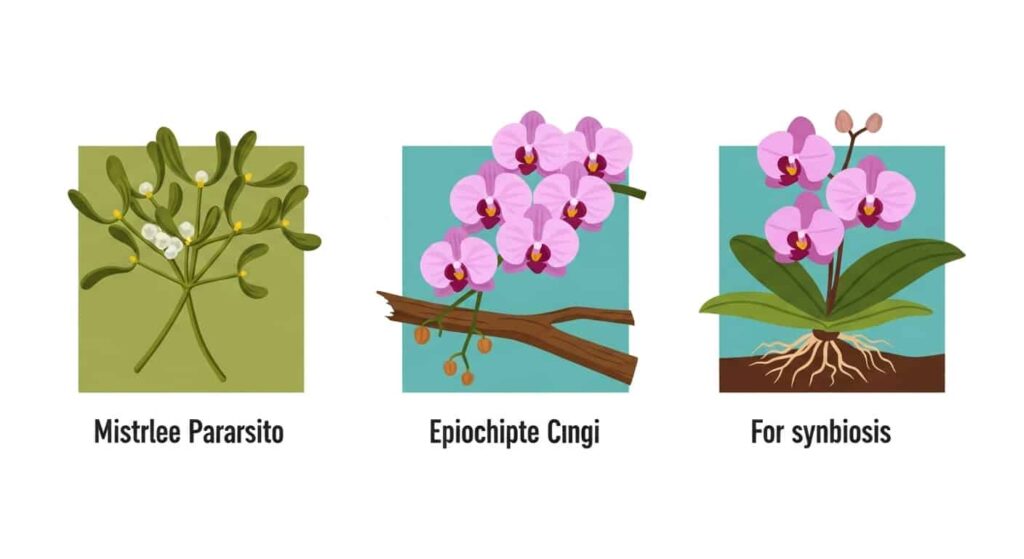
To understand why the orchid parasite myth is incorrect, it’s helpful to know the different ways plants interact.
Parasitic Plants
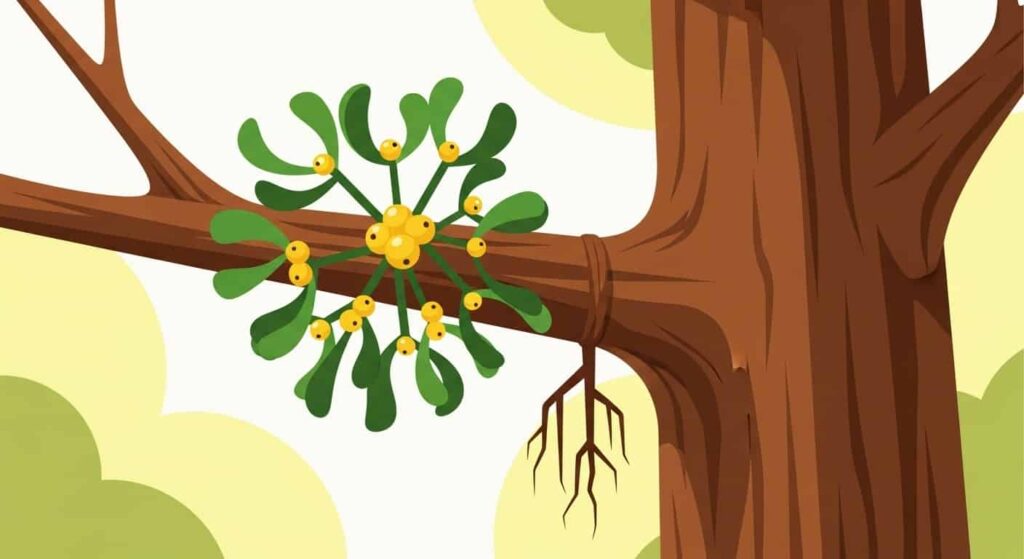
A parasitic plant, by definition, derives some or all of its nutritional requirements from another living plant. They have specialized roots called haustoria that invade the host plant’s vascular system to siphon off water and nutrients. Mistletoe is a well-known example of a parasitic plant. It attaches to a tree and feeds off it, which can weaken or even kill the host over time.
Epiphytic Plants
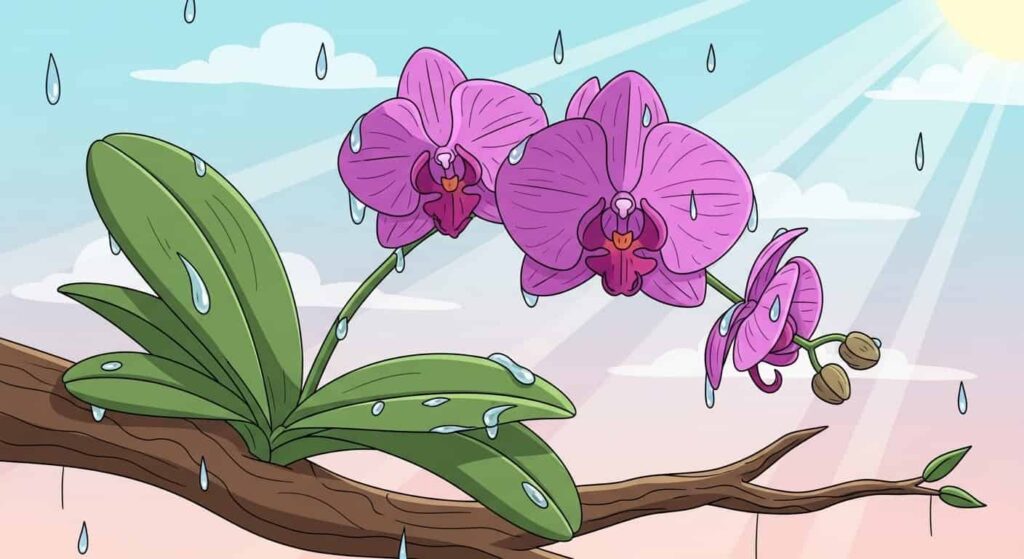
This is the category where most orchids belong. Epiphytes are plants that grow on other plants for physical support but do not take nutrients from them. Their roots are highly adapted to absorb moisture from the humid air and capture nutrients from decaying leaves and other organic matter. This lifestyle is a brilliant adaptation for thriving in crowded rainforests where competition for light on the forest floor is intense.
Symbiotic Relationships
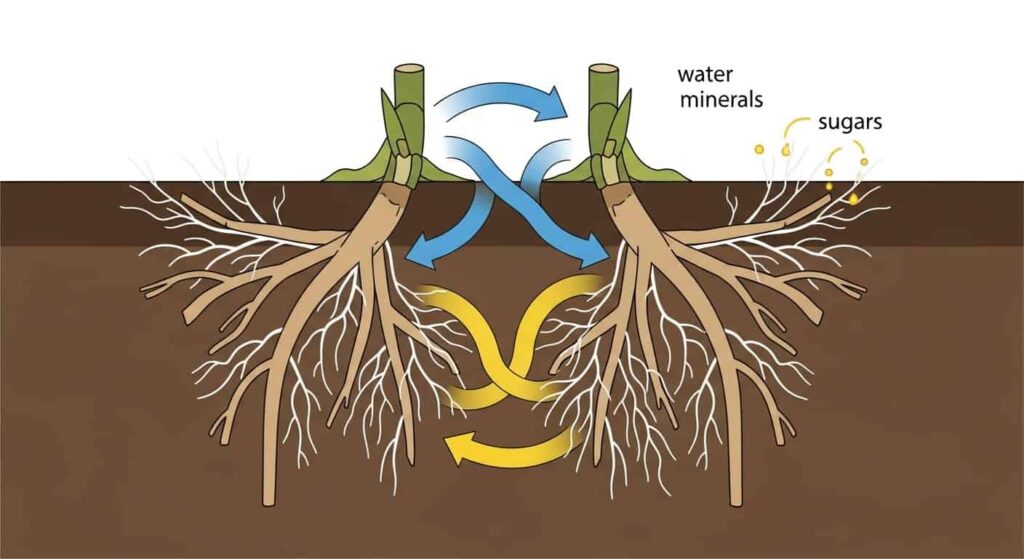
Are orchids parasitic or symbiotic? While most are not parasites, many orchids engage in crucial symbiotic relationships, particularly with fungi. A symbiotic relationship is one where two different species live together in a close and long-term interaction. This relationship is essential for the orchid’s survival, especially in its early life.
The True Nature of Orchids: Not a Parasite
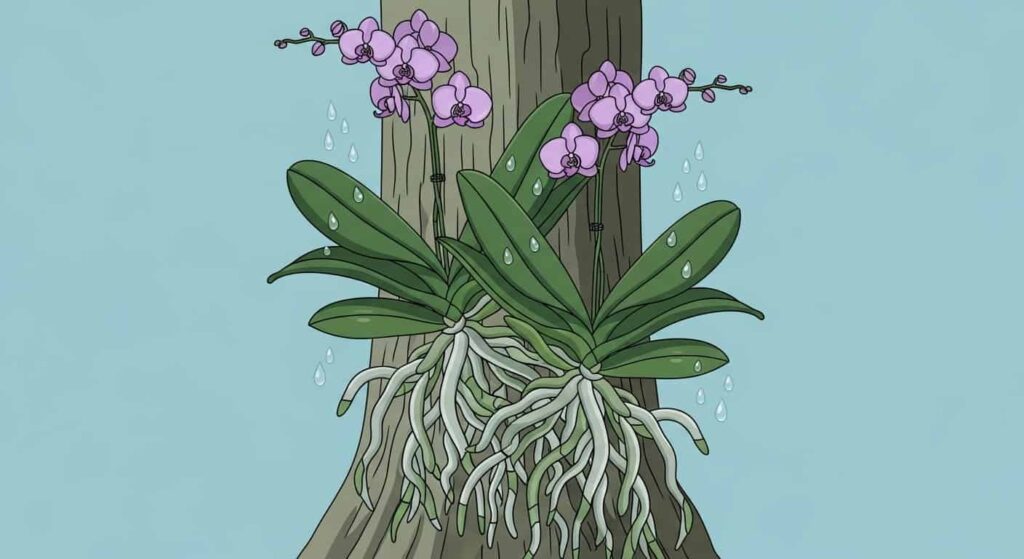
So, if most orchids are not parasitic, what are they? Let’s dive deeper into their survival strategies.
Epiphytic Orchids: Life in the Air
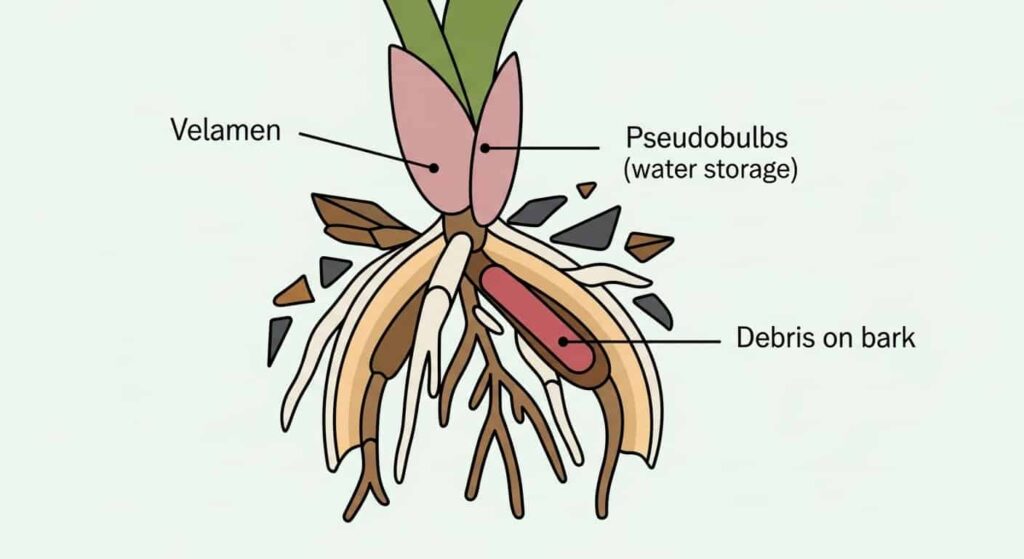
The vast majority of orchid species are epiphytes. They have developed remarkable adaptations to live high above the ground.
- Specialized Roots: Their roots are covered in a spongy, white layer called velamen. This layer quickly absorbs water from rain and humidity and helps the roots cling to tree bark.
- Nutrient Gathering: They are expert scavengers. Their root systems trap falling leaves and other organic debris, which decomposes and provides essential nutrients.
- Water Storage: Many epiphytic orchids, like Cattleyas and Oncidiums, have swollen stems called pseudobulbs. These structures store water and nutrients, helping the plant survive dry periods.
Therefore, asking “Is an orchid a parasite?” for these species misses the mark. They are independent and self-sustaining, merely using trees as a place to live.
Terrestrial Orchids: Rooted in the Earth
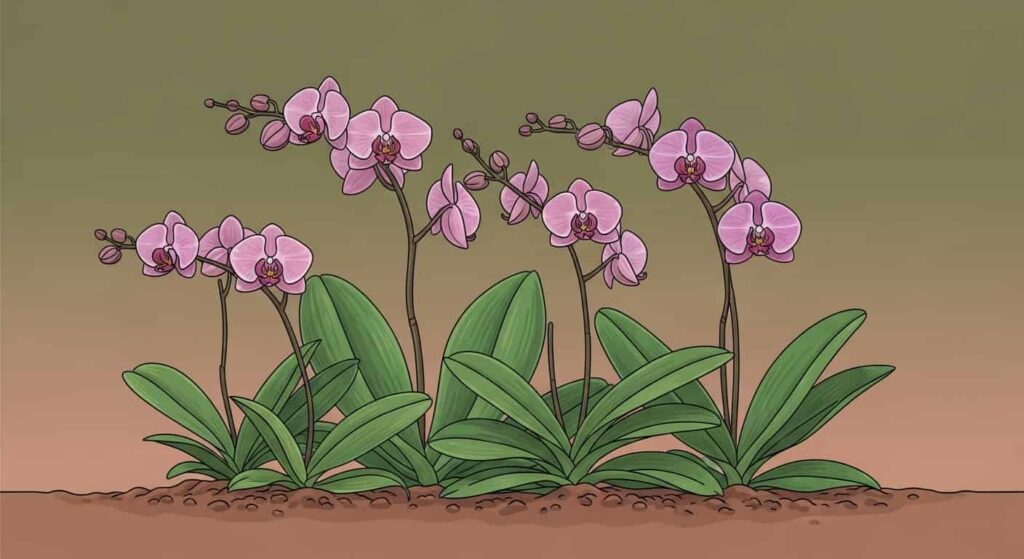
Not all orchids live in trees. Some are terrestrial, meaning they grow in the soil like most other plants. These orchids get their nutrients from the ground, further proving that the orchid family as a whole is not parasitic.
The Exception: Myco-heterotrophic Orchids
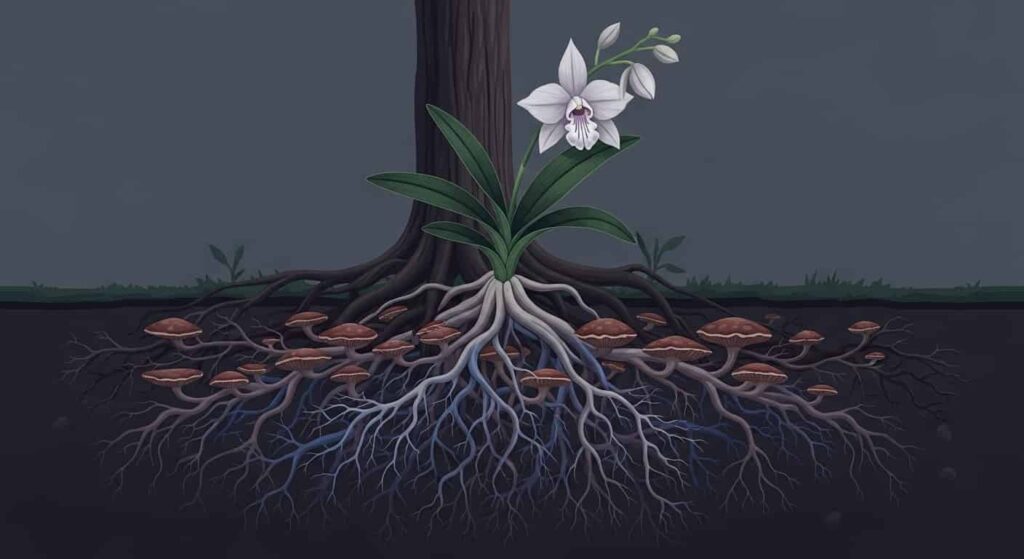
Here is where the topic gets a little more complex. While the statement “orchids are parasites” is generally false, a small, fascinating group of orchids breaks the rules. These are the myco-heterotrophs, sometimes called “fungus-eaters.”
These unique orchids lack chlorophyll, the green pigment that allows plants to perform photosynthesis and create their own food. So, how do they survive? They form a relationship with mycorrhizal fungi in the soil. However, this isn’t a mutually beneficial partnership. The orchid essentially becomes a parasite on the fungus.
The fungus, in turn, has a symbiotic relationship with a nearby tree. The tree provides the fungus with sugars from photosynthesis, and the fungus helps the tree absorb water and nutrients. The myco-heterotrophic orchid traps into this network and steals nutrients from the fungus, which the fungus originally received from the tree. Because the orchid indirectly takes nourishment from the tree via the fungal intermediary, it is considered a type of parasite. The Ghost Orchid (Dendrophylax lindenii) is a famous example of this kind of parasitic orchid.
So, while most orchids are not parasites, a few rare, parasitic orchids do exist. They are the exception that proves the rule.
Conclusion: A Verdict on Orchids
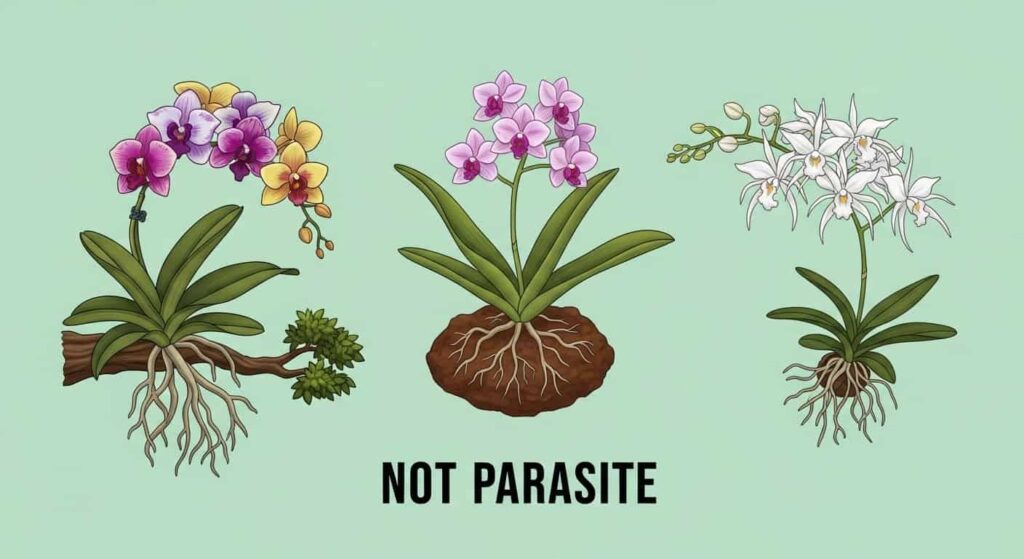
The idea that orchids are parasitic plants is a widespread misunderstanding. The vast majority of orchids are epiphytes, living harmlessly on trees to gain a better position for light and air. They are self-sufficient, drawing moisture and nutrients from the environment, not from their hosts.
While a small number of non-photosynthetic, myco-heterotrophic species can be considered a parasitic orchid type, they are a tiny fraction of the massive and diverse orchid family. For the average plant enthusiast and gardener, the orchids you encounter are not parasites. They are resilient and resourceful plants with a unique way of life. So, you can confidently admire that beautiful orchid on your windowsill or in a botanical garden, knowing it’s an independent survivor, not a freeloader.
Frequently Asked Questions (FAQ)
Are orchids parasitic?
No, most orchids are not parasitic. They are epiphytes, which means they grow on other plants for support but do not steal nutrients from them.
Is an orchid a parasite on the tree it grows on?
No. An epiphytic orchid uses a tree branch as an anchor to get better access to light and air. Its roots absorb water and nutrients from rain and decaying debris, not from the tree itself.
Are there any parasitic orchids?
Yes, there is a small group of orchids called myco-heterotrophs. These orchids lack chlorophyll and cannot make their own food. They get their nutrients by parasitizing fungi in the soil, which are connected to nearby trees. These are rare exceptions.
Are orchids parasitic or symbiotic?
Most orchids are neither parasitic nor truly symbiotic with their host trees. However, all orchids have a vital symbiotic relationship with specific fungi, which is necessary for their seeds to germinate and grow.
If my orchid is killing my tree, is it a parasite?
It is highly unlikely that an orchid is killing your tree. If a host tree is declining, it’s usually due to other factors like disease, pests, or old age. A very heavy infestation of many large orchids could potentially cause a branch to break under the weight, but the orchids are not feeding on the tree.
What is the difference between an orchid parasite and an epiphyte?
An orchid parasite would need to steal nutrients directly from its host to survive. An epiphyte, which describes most orchids, is a self-sufficient plant that simply uses another plant for physical support.

